Sunayani Devi – forgotten first modern woman artist of Bengal School of Art
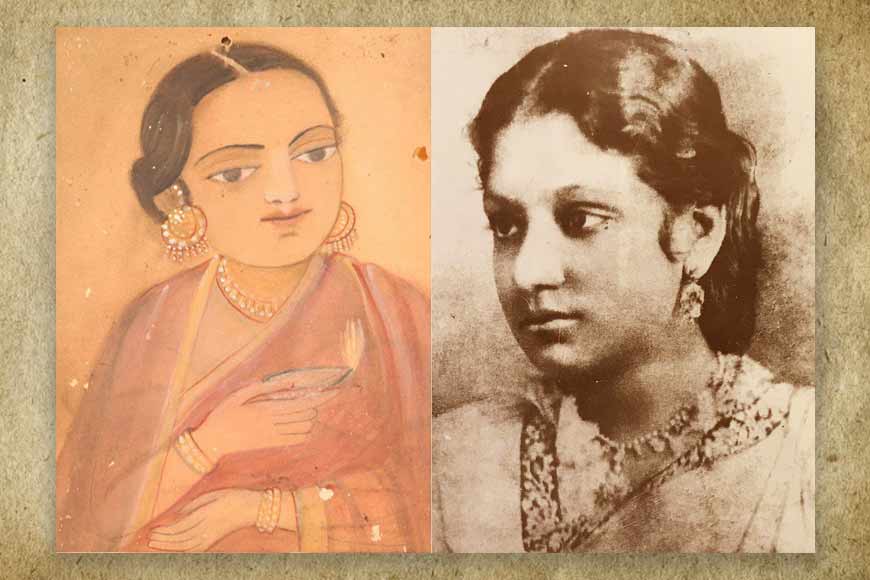
As the capital of the British Raj between 1858 and 1911, Calcutta has long been at the crossroads of multiple influences and played a major role in the cultural history of India. The Bengal Renaissance was one such movement in the 19th century as a social, cultural, and intellectual awakening, whose artistic offspring became known as the Bengal School of Art. This school of art was led by the members of the Tagore family of whom Sunayani Devi was an important member.
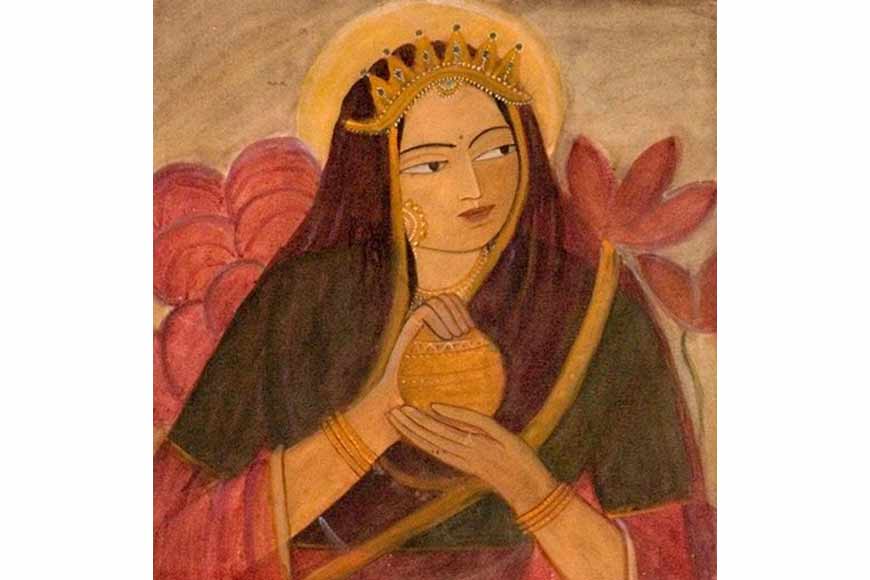
Born into the aristocratic Tagore family in 1875, she was a self-taught artist. Inspired by her siblings, Abanindranath, Gaganendranath and Samarendranath, she started dabbling with colours at the age of three. She developed an irresistible urge to pick up paint and brush as she observed her brothers experimenting with varied art forms. However, at the age of 11, she was married to Rajanimohan Roy, grandson of Raja Ram Mohan Roy. It was Roy who encouraged his young, talented bride to explore her creative instincts and she began her artistic journey at the age of 12. She was never taught to draw and her untouched spontaneity directly blooms in colours and sings in lines.
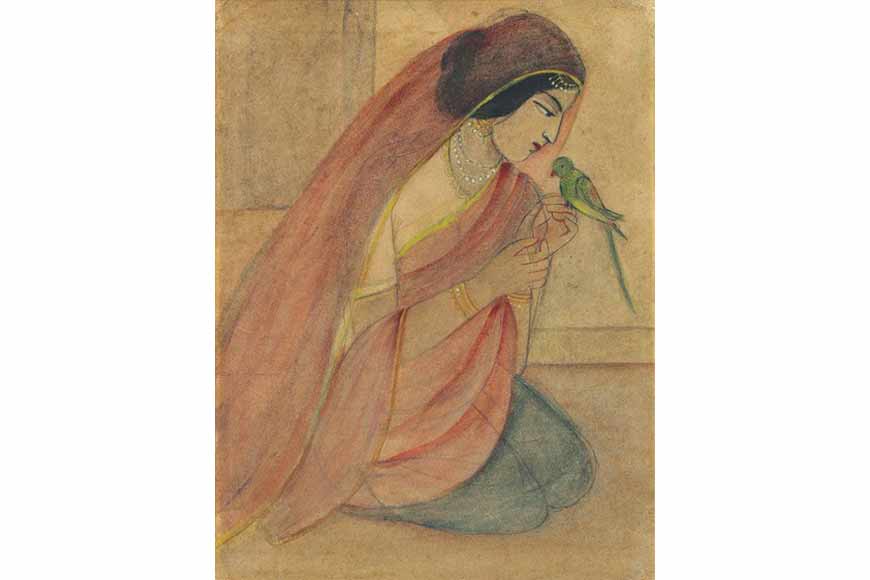
As a child, Sunayani Devi was drawn to the popular mythological prints of the 19th-century painter, Raja Ravi Varma, that hung in her aunt’s room. Her subjects were drawn from Indian mythology and epics like the Mahabharata and Ramayana as well as from her domestic life in a traditional Bengali household. Her style was inspired by the traditional pata paintings and folk figurines of Bengal, and she is credited as the first modern artist to champion rural and folk art, a trend that artists like Jamini Roy would later embrace. Through her brother, Abanindranath, she discovered Rajput miniatures.
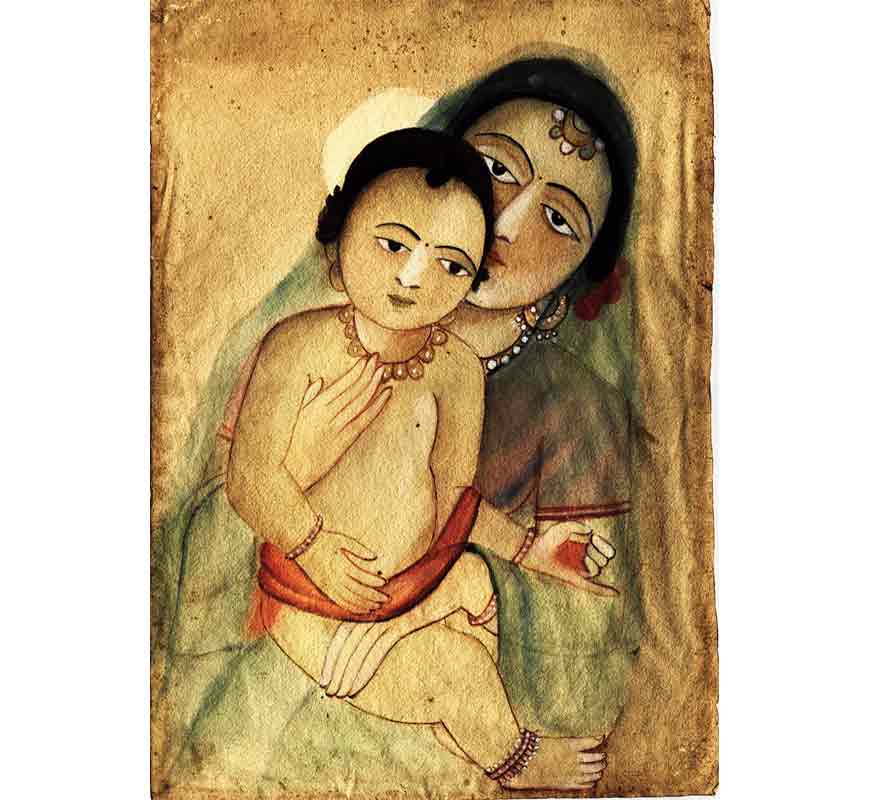
The art of Sunayani Devi is bereft of any influence of the leading artists of the Tagore School. She is delightfully unconventional and hence very refreshing. Her paintings have a special charm that lies in her free and flowing lines and vivid colours. The folk art of Bengal forms the basis of her art. She mostly painted scenes of domesticity, drawing from her own life and tribulations. These scenes are often tinged with a sense of melancholy and loneliness and reflect a yearning for freedom. Although in line with the intellectual certainties and nationalistic fervor that her siblings exhibited, she withdrew within a more personal domain. “Her naïve work was singled out as a continuation of the simple art of the Indian village, a contemporary expression of authentic India. The modernist discourse of primitive simplicity and the nationalist discourse of cultural authenticity come together in the image of Sunayani Devi as a nationalist artist,” once commented art historian Partha Mitter.
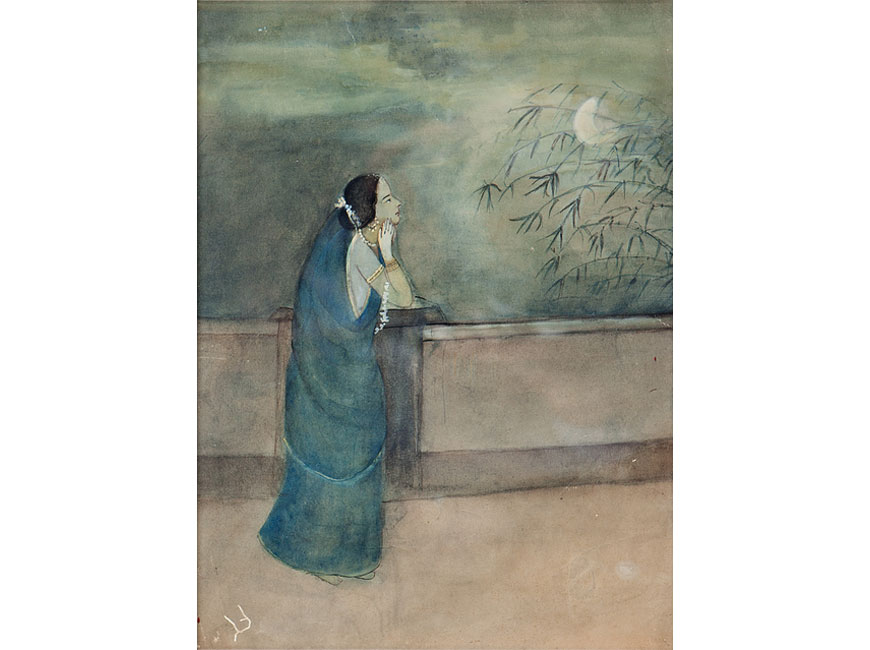
Sunayani Devi’s simple renderings are often categorised as naive art or primitivist art, which ultimately formulated as a form of anti-colonial resistance. Without any institutional training in academic realism she had a natural free reign in creating her artworks. Not bound by any formal language, she took up the imagery and iconography of local art forms that were, like hers, created without such framework pressures. She drew a lot of inspiration from the wash technique of Abanindranath Tagore. She did not pre-plan her art by drawing first but rather let her creative urges guide her. She would first draw a red or black outline with brush on paper. This was then filled in with water colours she herself prepared, applied with a thin paintbrush. After this, she dipped the sheet into a circular drum of water allowing the colours to be absorbed by the paper. The washes invested her works with a delicate hue. Once hazy shapes started emerging from the washes, she firmed up the outline.
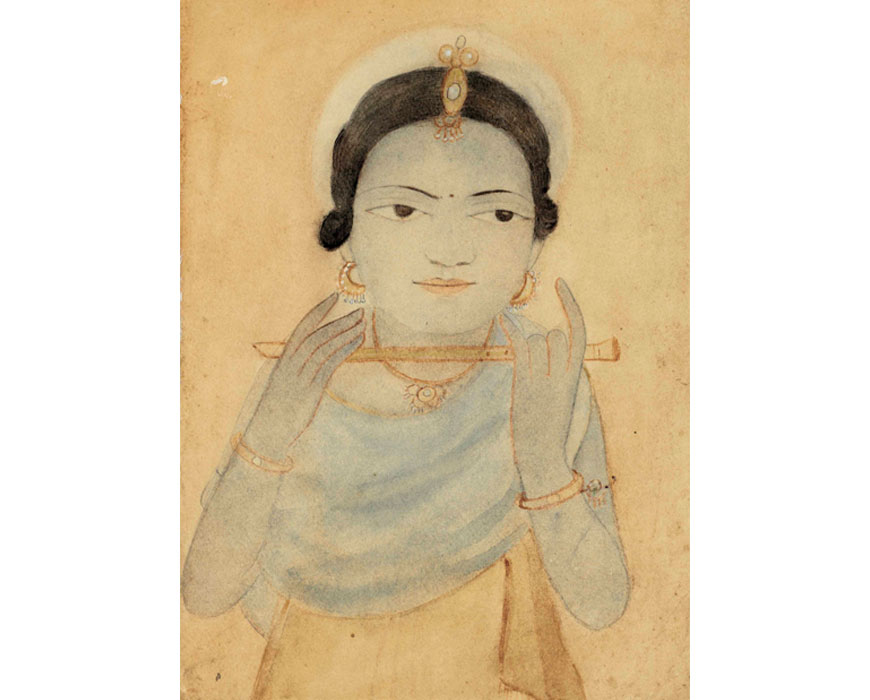
Art historian Dr Stella Kramrisch called her the first Indian modern woman artist and commented that Sunayani Devi’s paintings grew organically, gushing ‘out of her very nature’. Her art was a kind of creative relief and she often painted on both sides of a sheet of paper, back of exercise books or discarded cardboards to fulfill her creative urge. The first woman artist of India to gain public recognition, Sunayani Devi’s art was included in the exhibition of the Society of Oriental Art held in Calcutta in 1922, which also showed the works of Klee, Kandinsky and other Bauhaus artists. In 1927, she was included in the exhibition held by the Women’s International Art Club in London. Austrian painter Nora Pursar was impressed by her lotus-eyed women, charming colours and monumental fresco-like paintings. She later met Sunayani during her visit to Calcutta to produce murals for a local Art Deco movie theatre.
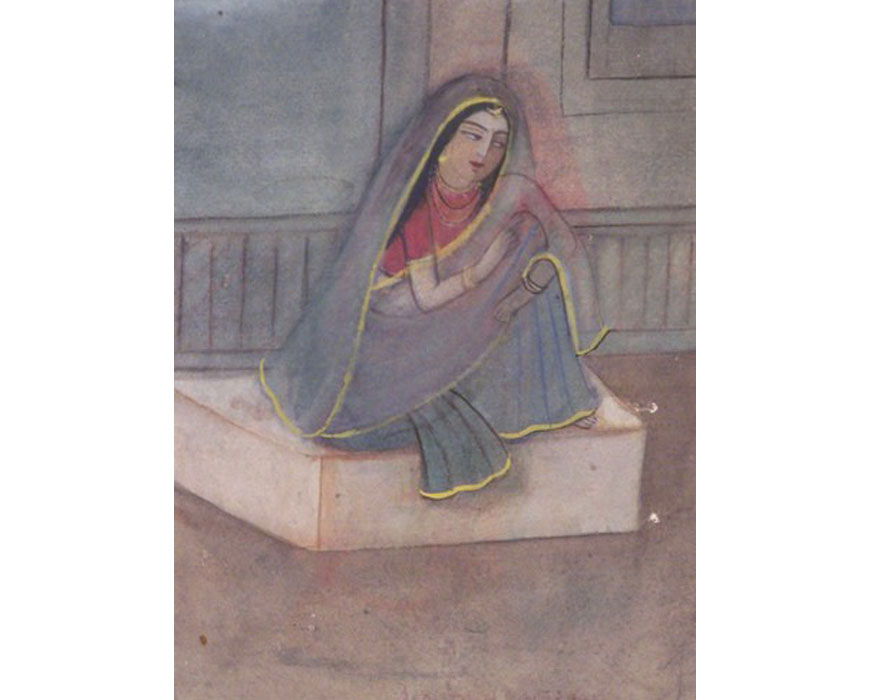
In 1935, an exhibition of her works was held at her home. This was her last public show. In the 1940s, her family suffered a series of misfortunes, and she left the world of art. Art historian Debdutta Gupta says, “Though not much is known about the reason behind her departure from the world of art, women back in those times prioritized their families over individuality. Women would not mind sacrificing anything for the sake of their families. Sunayani Devi was no exception.” She died on February 23, 1962.









